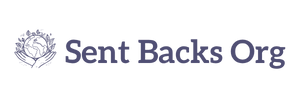Learning a new language opens doors to cultural understanding, travel, career opportunities, and cognitive growth. For beginners, the right language learning program can make all the difference. With modern technology, you don’t need a classroom—just motivation and the right tools. This article introduces the best beginner-friendly language learning programs in 2025 and how to choose one based on your needs.
Why Use Language Learning Programs?
Accessibility
You can learn anywhere—on your phone, tablet, or computer.
Interactive Learning
Modern programs include games, quizzes, audio, and real-life scenarios.
Personalized Progress
Programs track your strengths and weaknesses to customize lessons.
Top Language Learning Programs for Beginners
1. Duolingo
- Best For: Casual learners
- Languages: Over 40 including Spanish, French, and Japanese
- Features: Gamified lessons, streaks, and daily goals
- Cost: Free with optional premium version
2. Babbel
- Best For: Conversational skills
- Languages: 14 major languages
- Features: Grammar tips, cultural context, voice recognition
- Cost: Subscription-based with affordable plans
3. Rosetta Stone
- Best For: Immersive learning
- Languages: 24+ languages
- Features: Visual learning, speech practice, no translation
- Cost: Paid with lifetime access options
4. Busuu
- Best For: Speaking practice
- Languages: 12 major languages
- Features: Real conversation practice with native speakers
- Cost: Free with premium upgrade available
5. Mango Languages
- Best For: Structured learners and institutions
- Languages: 70+ including less common dialects
- Features: Cultural insights, grammar notes, review system
- Cost: Free through many libraries or paid subscription
Features to Look For as a Beginner
Simple Interface
Choose a platform that’s user-friendly and not overwhelming.
Progress Tracking
Visual progress charts help keep you motivated.
Audio and Pronunciation Tools
These are essential for mastering speaking and listening.
Bite-Sized Lessons
Short, focused lessons fit easily into a busy schedule.
How to Choose the Right Program
Determine Your Goal
Is your focus travel, work, academic study, or cultural interest?
Preferred Learning Style
Do you learn better with visuals, audio, games, or speaking?
Budget
Many platforms offer free trials—test before committing.
Community Interaction
Some apps let you practice with native speakers or fellow learners.
Tips for Beginners
- Practice daily—even 10 minutes helps
- Don’t fear mistakes—they’re part of learning
- Use flashcards or mobile widgets for quick reviews
- Watch children’s shows or listen to music in your target language
- Combine programs for broader exposure
Conclusion
For beginners, the right language learning program makes starting a new language exciting and achievable. From fun apps like Duolingo to immersive tools like Rosetta Stone, there are options for every goal and budget. Choose a program that fits your learning style and stay consistent. With daily effort, you’ll soon be speaking your new language with confidence.
FAQs
How long does it take to learn a new language?
For basic fluency, most people need 6 months to 1 year with consistent practice.
Are free programs good enough?
Yes, many free apps like Duolingo and Busuu are very effective for beginners.
Can I learn multiple languages at once?
You can, but it’s better to start with one to avoid confusion.
Do these programs help with speaking skills?
Yes, especially those with speech recognition and conversation practice.
Is grammar important at the beginning?
Basic grammar helps, but speaking and listening should be your initial focus.



